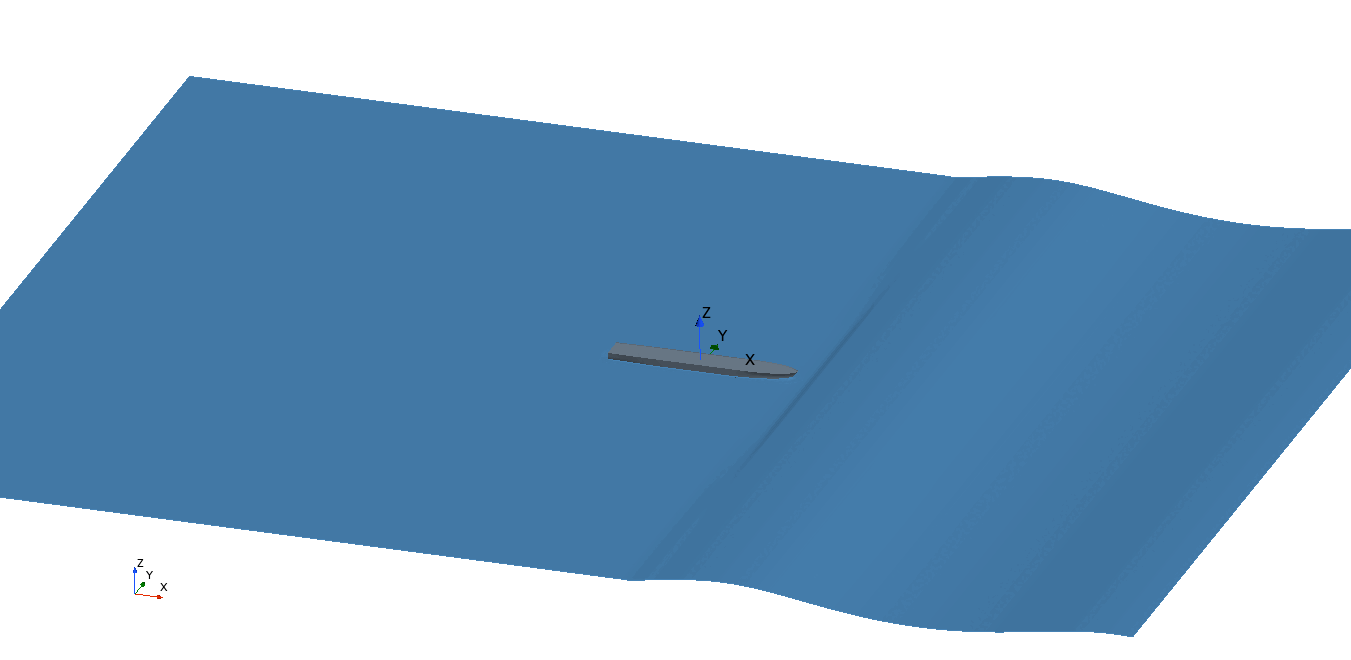DFBI and AMR: Boat In Parameterized Waves
In Dynamic Fluid-Body Interaction (DFBI) simulations, you can use Adaptive Mesh Refinement (AMR) to dynamically refine the mesh around a moving 6-DOF body based on the computed flow solution.
In this tutorial, you simulate the motion of a boat hull facing oncoming waves. The motion is a combination of a prescribed forward motion through boat propulsion and the motion induced by the oncoming waves.
You model the boat hull as a 6-DOF body and the surrounding fluid as a fifth-order wave. As you are mainly interested in the solution in the vicinity of the hull, you reduce the domain size and the computation time using wave forcing. This solution technique forces the wave solution to a simplified solution at the outer boundaries of the fluid domain.
To account for the large relative motion between the boat and the sea, you use the overset mesh technique, where the boat is the overset region and the sea is the background region. To reduce the overall cell count, you use Adaptive Mesh Refinement (AMR). You start with a coarse mesh for the background region, while the mesh in the overset boat region is sufficiently fine. During the simulation, AMR refines the background mesh dynamically near the overset interface. This ensures a similar cell size on both sides of the moving overset interface for a precise overset interpolation. Due to the fine mesh in the boat region, it is not necessary for AMR to further refine the mesh in this region.
In addition to the overset mesh technique, a VOF wave also requires a large cell count for the sharp free surface resolution. AMR recognizes the free surface and dynamically refines the cells across the free surface during the simulation run.
